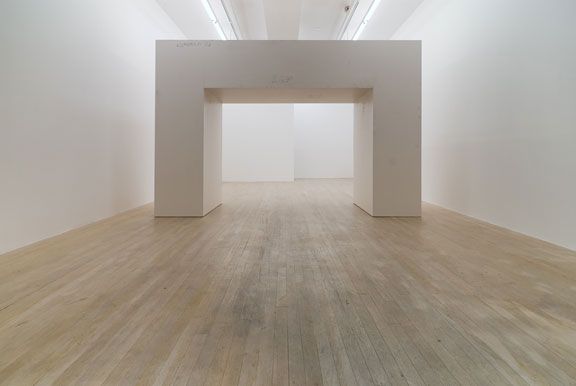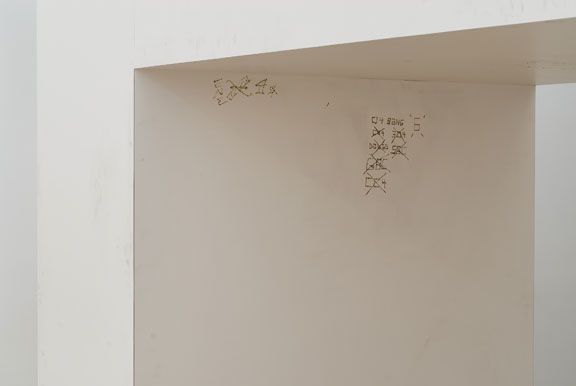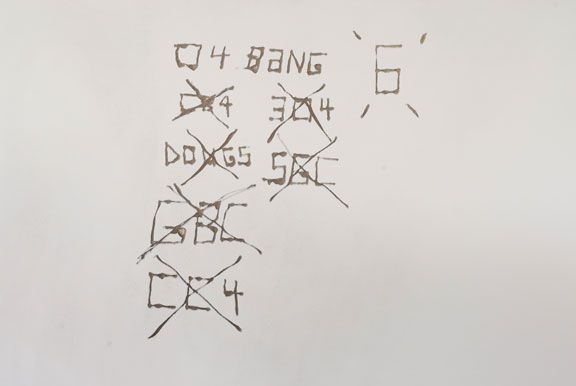Foxy Production presents Superoverpass by STERLING RUBY, an exhibition of provocative investigations of form, expression, and transience. Featuring a monumental architectural work in the main gallery and a salon of prints and collages in the back space, Superoverpass furthers Ruby’s visceral deconstructions and reconstructions of dominant forms and systems. He subjects the institutionalization of the Modernist project to a form of assault through bodily gestures and semantic scramblings, destabilizing the idea of transcendence via abstraction.
Superoverpass (2007) is a white geometric bridge-shaped sculptural work that fills the entire main space of the gallery: viewers are forced to walk under and through it. At first recalling a Robert Morris Minimalist sculpture, on closer inspection the work loses its perfectionist sheen and its claim to purity: its Formica surface is defaced and degraded with scratch graffiti and grime. Confounding expectations, it presents a Minimalist form contaminated by the collective expression of etched “tags,” and the stains of wear, tear, and time.
But rather than romanticizing the expressive, Ruby taps the collective anguish and emotion embedded within and regulated by systems of meaning and control. His Anti Prints (2007), a series of fluorescent Letterpress prints, read like protest signs gone awry. With perplexing phrases and images, they combine many of Ruby’s most powerful motifs: drips, kilns, and spray graffiti. In parts cryptic, raw, architectonic, sexual, and nebulous, they wryly attack Minimalism, geometry and architecture, proposing a self-styled “amorphous law.”
Ruby’s series of collages, with titles including Bandanas, Blood and Crips, Cal State Prison, and Gangs, refers to group articulations and structures that controvert legal and moral boundaries. Incorporating elements such as prison cells, gray rectangular blocks, patches of patterning, found images of transsexuals, and overlays of disturbing blood-like smears, they create a stirring vortex of signs underpinned by a threatening sense of disquiet.
A simultaneous exhibition is at Metro Pictures
Credits
Installation photography by Mark Woods.



